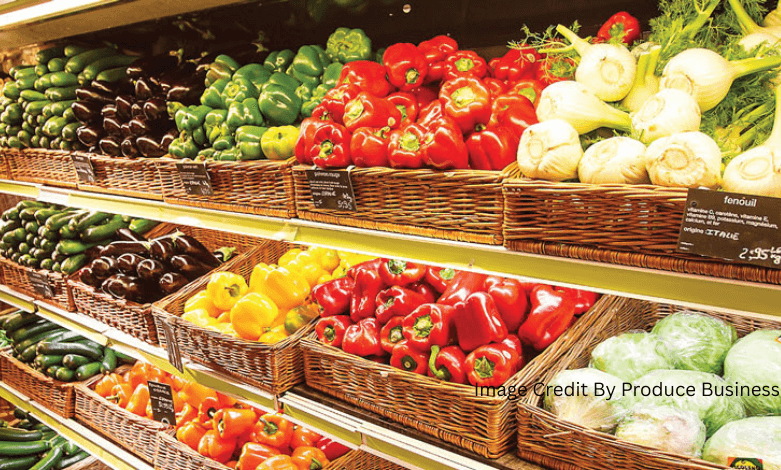
Going local with Canadian-grown produce reshaped how I shop, eat, and think about food—after eating Canadian-grown produce for 30 days, here’s what a remarkable journey revealed. The experience highlighted the benefits of eating Canadian-grown produce, both nutritionally and environmentally. Embracing eating Canadian-grown produce is not just beneficial, but also supports local farmers and the economy. The advantages of eating Canadian-grown produce were evident throughout the process. Discover more about eating Canadian-grown produce and how it can impact your life.
What Happened
In June 2025, I committed to a simple but surprisingly transformative challenge: eat only Canadian-grown produce for an entire month. From the bustling farmers’ markets of Vancouver to quiet co-ops in Ontario, I sourced fruits and vegetables grown entirely within the country’s borders. What began as a curiosity about food security and seasonal eating quickly turned into a profound lesson in sustainability, health, and community connection.
The Local Food Shift: Why Canadian-Grown Matters
Canada’s local food movement has been gaining momentum, and this experiment gave me a personal window into why eating Canadian-grown produce is significant. Amid growing concerns about climate change, global food chain disruptions, and inflation, buying local isn’t just trendy—it’s practical and powerful.
In 2022, the Canadian Agri-Food Policy Institute reported that only 30% of the produce consumed in Canada was grown domestically. The rest? Imported, often from thousands of kilometers away. This distance contributes to emissions, food spoilage, and higher costs. By going local, I immediately noticed:
- Fewer preservatives and fresher taste from eating Canadian-grown produce
- A deeper connection with farmers
- Awareness of seasonal limitations (no bananas or avocados!)
- Greater support for the local economy
Read more: How Canadian Farmers Are Powering a Local Food Renaissance
Expert Insights: What the Data and Dietitians Say
Registered dietitian Sarah Wilkins of the Canadian Nutrition Council notes, “Eating seasonally with Canadian-grown produce can improve gut health and reduce exposure to unnecessary additives. Plus, you’re eating food that’s fresher and hasn’t spent days in transit.”
In fact, multiple studies have shown that local produce contains higher nutrient retention, particularly vitamin C and antioxidants, which degrade in long-distance shipping (Journal of Food Quality). And environmentally, local sourcing slashes carbon footprints by cutting transport emissions.
Dr. Mark Leung, a food systems researcher at UBC, adds that “when consumers invest in local produce, they’re voting with their wallet for a more resilient food ecosystem.” Eating Canadian-grown produce is a vote for a sustainable future.
The Emotional and Economic Impact of Eating Local
Beyond nutrition, the shift affected my mindset. With fewer choices, I had to get creative—kohlrabi stir-fries, roasted parsnip chips, and strawberry-only desserts became staples. But it also built a rhythm with the land. I began to appreciate the cycles of Canadian agriculture, from Nova Scotia’s rhubarb to BC’s cherries.
Economically, I saw the difference: nearly every dollar went back into a local farm or co-op. Farmers I met at weekly markets shared how even small consumer shifts could sustain family-run operations struggling against multinational grocery chains.
Read more: The Economics of Eating Local in Canada
What Comes Next: Could This Be Scaled Up?
While a 100% local diet year-round isn’t feasible for most Canadians, hybrid models are growing. Community Supported Agriculture (CSA) subscriptions, winter greenhouse expansions in Ontario, and urban farming initiatives in Montréal are paving the way for wider access.
Policy shifts could make a huge difference. Advocates are calling for federal support in expanding year-round greenhouses and investing in sustainable transportation networks for rural growers. These steps are vital for making eating Canadian-grown produce more accessible.
Public Sentiment & Reactions
Online, the Canadian-grown produce challenge sparked conversation. Social media hashtags like #EatLocalCanada and #FarmToFork2025 trended, with influencers, chefs, and nutritionists sharing their own regional meals and recipes.
Critics questioned the affordability of local-only eating—but many found that buying in-season actually lowered their grocery bills. “I spent $60 less this month and ate way healthier,” one Reddit user shared on a local food thread.
The Way Forward: Small Shifts, Big Change
Eating local doesn’t have to be all or nothing. Even a partial shift—like choosing in-season Canadian apples over imported ones—can collectively reduce food miles and support the national economy. The benefits of eating Canadian-grown produce are evident in every choice.
Tips for Getting Started:
- Visit local farmers’ markets weekly
- Use seasonal produce guides by province
- Subscribe to a CSA box for summer or fall
- Freeze or preserve seasonal goods for winter use
Why This Matters
This wasn’t just a diet shift—it was a mindset shift. In a time when climate urgency, food insecurity, and economic uncertainty dominate headlines, eating Canadian-grown produce is more than a culinary choice. It’s a conscious step toward a healthier, more sustainable, and community-rooted future.
Want more stories like this?
Read next: Island Health Restructures: Execs Cut Amid Budget Crunch, ER Wait Times Go Live
Explore: 5 Canadian Superfoods You Should Be Eating Year-Round




